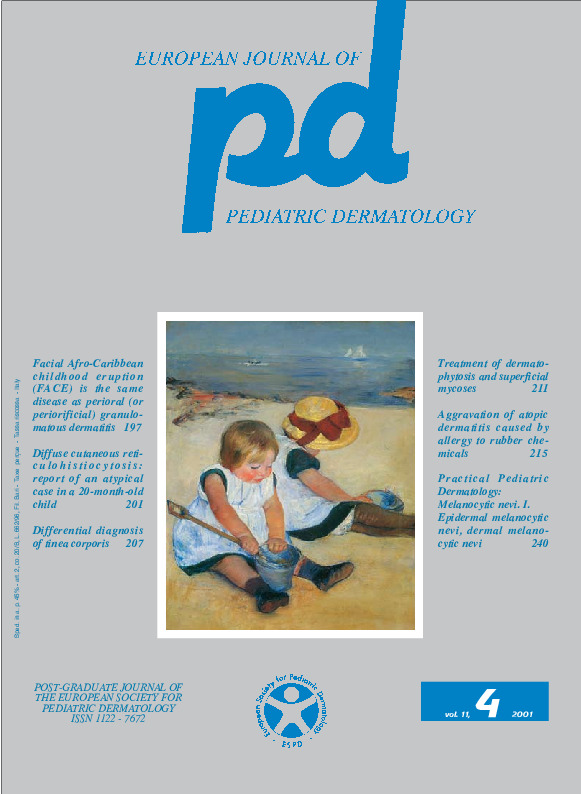Facial Afro-Caribbean childhood eruption (FACE) is the same disease as perioral (or periorificial) granulomatous dermatitis.
Downloads
How to Cite
Jansen T., Romiti R., Herde M., Altmeyer P. 2001. Facial Afro-Caribbean childhood eruption (FACE) is the same disease as perioral (or periorificial) granulomatous dermatitis. Eur. J. Pediat. Dermatol. 11 (4):197-200.
pp. 197-200
Abstract
A 13-year-old West-Indian girl with a 6-month history of an asymptomatic facial eruption is presented. Clinical examination revealed multiple monomorphic, skin-colored, aggregated papules, scattered around the mouth and nose, also involving the area immediately adjacent to the lip vermillion. Isolated lesions around the left eye were also present. Histopathological examination of a representative lesion revealed a perivascular and perifollicular lymphohistiocytic infiltrate in the upper half of the dermis as well as epithelioid histiocytes forming the core of granulomas enveloped by a mantle of lymphocytes and histiocytes. A therapeutic regimen including doxycycline 100 mg a day for two weeks and 2% metronidazole cream twice a day led to complete resolution of all skin lesions within four months. Although the condition appears to be much more common in prepubertal black children, the acronym FACE (facial Afro-Caribbean childhood eruption) does not take into account the occasional presence of this condition in other races or the occurrence of extrafacial lesions. It is likely that, despite minor clinical variations, separate diagnostic labels including granulomatous perioral dermatitis and granulomatous periorificial dermatitis have been used for what seems to be the same disease.Keywords
Granulomatous perioral dermatitis, Granulomatous periorificial dermatitis, Acne-like eruption

